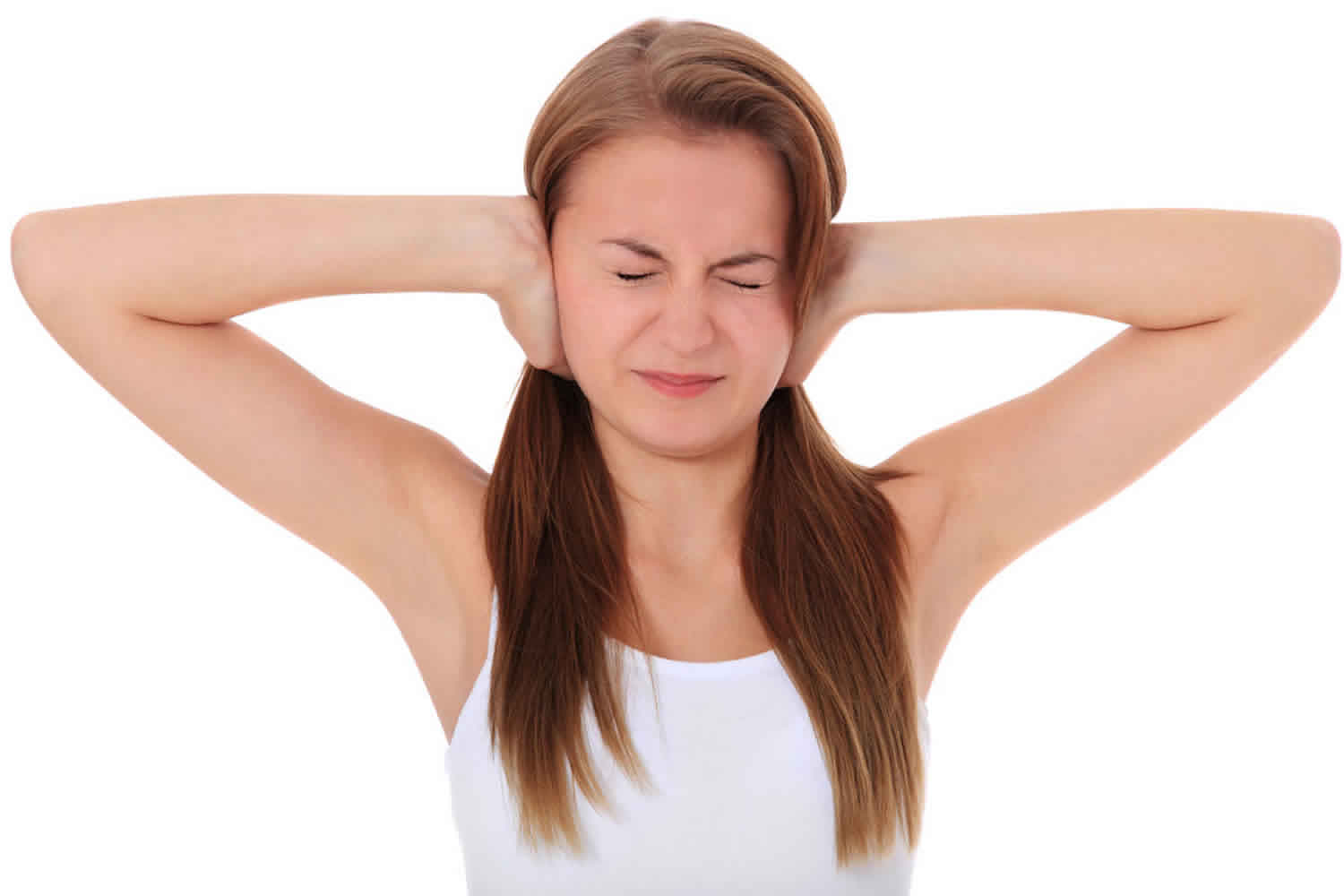Contents
What is hyperacusis
Hyperacusis is a hearing disorder that results in intolerance to everyday sounds (sounds that would not bother most people) that causes significant distress and affects a person’s day-to-day activities. Hyperacusis can vary quite a lot. For example, some people find loud noises extremely uncomfortable, some find certain noises particularly annoying, some develop a fear of certain noises, while others experience pain when hearing ordinary sounds.
Hyperacusis may occur due to many different causes, such as head injury, viral infections, or neurological disorders. In some people with hyperacusis, sounds are perceived as being much louder than they would be by someone without this disorder. Some people may have emotional reactions to sounds, such as being annoyed or afraid. Others experience pain with low-level sounds. People with hyperacusis can have only one or different combinations of these symptoms. Another very common symptom is ringing in the ears (tinnitus).
Hyperacusis affects people of all ages and is quite common in children.
Hyperacusis may just be a minor nuisance for some, but for many it can have a major impact on their life.
For many patients, the first reaction to hyperacusis is to protect themselves with ear plugs, muffs or other devices. There is, however, reason to believe that such strategies to decrease the intensity of sound entering the auditory system may further increase the central gain, exacerbating rather than improving the hyperacusis. In the past, patients had little choice but to resort to hearing protection devices since hyperacusis was not widely regarded as a genuine symptom.
Treatment may involve a program of sound therapy to train the brain to better process everyday sounds. This type of treatment involves listening to low-level white noise to gradually improve the ability to hear sounds.
For tinnitus, tinnitus retraining therapy was introduced in 1993 1 and with minor modifications this has been advocated also for hyperacusis. After audiological and medical evaluation, the protocol11 requires classification of the patient according to the tinnitus and hyperacusis state, and then ‘directive counselling’ about the auditory system, about mechanisms of tinnitus and hyperacusis and about the distress associated with them. Binaural sound therapy, from ear-level wide-band generators, is undertaken even when the symptoms are unilateral. Treatment is based on the notion of desensitization, and the sound intensity is increased from a low level gradually over time. No randomized controlled trials have been done on retraining therapy for hyperacusis; they would be hard to design in view of the twin elements of counseling and sound therapy. Several observational studies 2 have pointed to improvements in loudness tolerance, but the nature of training to do tinnitus retraining therapy (attendance at an examined course run by the originators) raises concerns about objectivity. Nevertheless, the approach taken by tinnitus retraining therapy practitioners—promoting understanding and insight and the use of low-level, non-threatening, wide-band noise—seems based on common sense.
For the psychological distress associated with tinnitus, cognitive-behavioral therapy (CBT) has been identified as the treatment of choice and this seems a reasonable strategy to counter the anxiety and stress associated with hyperacusis, together with information counseling, relaxation therapy and sound therapy. Recent research suggests patients often feel CBT, counseling and education are the most effective treatments. Some people also found sound therapy helpful, but it wasn’t clear whether it provided any additional benefit. There is at present some tension between advocates of retraining therapy and advocates of psychological therapy, but the differences between the two are not great 3. Patients would probably benefit if the insights from both could be brought to bear.
Visit your doctor if you have a severe sound intolerance. They can examine your ears and refer you to an ear, nose and throat (ENT) consultant or a hearing specialist (audiologist) for tests if necessary.
There are no tests that can definitively diagnose hyperacusis, but you may be asked to fill in a questionnaire about your symptoms and have a hearing test to determine what level of sound causes a reaction.
Hyperacusis causes
The cause of hyperacusis is unclear. Hyperacusis has been linked with a number of other conditions, although many people with hyperacusis don’t have any other obvious problems.
Hyperacusis has been associated with:
- Tinnitus – hearing sounds that come from inside your body, rather than from an outside source
- Hearing loss – the brain may sometimes compensate for reduced hearing by amplifying signals coming from the ears
- Damage to the ear or brain – including from a head injury, ear surgery, exposure to loud noise, earwax removal, glue ear, and persistent ear infections
- Migraines
- Bell’s palsy – a type of facial paralysis
- Ramsay-Hunt syndrome Depression
- Stapedectomy
- Perilymph fistula
- Head injury
- Lyme disease
- Ménière’s disease – a disorder of the inner ear that causes a spinning sensation (vertigo), tinnitus, and hearing loss
- Depression
- Post-traumatic stress disorder (PTSD)
- Addison’s disease – a rare disorder of the adrenal glands, which sit near the kidneys and produce important hormones
- Disorders affecting the brain – such as Williams’ syndrome or autism spectrum disorder
Williams syndrome is a disorder characterized by deficits in conceptual reasoning, problem solving, motor control, arithmetic ability and spatial cognition 4, with an incidence of 1 in 20 000 live births. As many as 90% of individuals with Williams syndrome report hyperacusis 5 and a proposed mechanism is 5-hydroxytryptamine (5-HT) dysfunction 6. Other conditions in which hyperacusis has been reported are middle cerebral aneurysm 7 and migrainous cerebral infarction 8. A case series of hyperacusis in multiple sclerosis has been reported 9, though the association is unusual.
Hyperacusis can also be a side effect of certain medications. If you’re taking any medication, check the leaflet it comes with to see if hyperacusis is listed as a possible side effect.
Hyperacusis symptoms
Hyperacusis can either start suddenly or develop gradually over time.
When someone with hyperacusis hears noise, they may:
- feel uncomfortable
- cover their ears or try to get away from the noise
- feel angry, tense, distressed, or anxious
- experience pain – hyperacusis can be very painful for some people
Some people become afraid of sound and avoid noisy situations, causing them to become socially isolated. School and work life can also suffer as it can be very difficult to concentrate.
Hyperacusis test
Patients with hyperacusis typically first receive an otolaryngologic exam and hearing testing. These tests can be done by an Audiologist or an Otolaryngologist (ear, nose, and throat doctor). History and physical examination are the primary diagnostic tools for hyperacusis. Key elements of the physical examination include the head, eyes, ears, nose, throat, neck, and neurologic system.
Almost all patients presenting with persistent tinnitus and hyperacusis should undergo pure tone audiometry with assessment of air and bone conduction, speech discrimination testing, and tympanometry 10. Table 1 provides sensitivity and specificity data for several ancillary and imaging studies in the evaluation of patients with tinnitus 11.
Table 1. Ancillary and Specialized Tests for Evaluating Tinnitus
| Test | Description | Sensitivity (95% confidence interval) | Specificity (95% confidence interval) | ||
|---|---|---|---|---|---|
Auditory brainstem response | Measures propagation of sound stimuli along acoustic nerve | For vestibular schwannoma: 85% (82% to 87%) 11 | For vestibular schwannoma: 77% (73% to 81%) 11 | ||
Contrast-enhanced MRI | — | For vestibular schwannoma: 100% 11 | For vestibular schwannoma: near 100% 12 | ||
MRI | — | For vestibular schwannoma: | For vestibular schwannoma: | ||
T2-weighted MRI: 98% (94% to 99%) 11 | T2-weighted MRI: 90% to 100% 11 | ||||
T2*-weighted MRI: 96% (86% to 99%) 11 | T2*-weighted MRI: 86% to 99% 11 | ||||
Pure tone audiometry | Usually measures air and bone conduction between 250 and 8,000 Hz | For vestibular schwannoma: 92% 13 | For vestibular schwannoma: 45% 13 | ||
In Meniere disease, hearing loss is typically “upsloping,” affecting low frequencies (below 2,000 Hz) 14 | |||||
Speech discrimination | Scored recognition of phonetically balanced words | For vestibular schwannoma: 45% 15 | — | ||
Vestibular testing | Electronystagmography | For Meniere disease: 50% 14 | — | ||
Footnote: MRI = magnetic resonance imaging
[Source 16 ]Hyperacusis treatment
There are no specific medicines or operations that can treat hyperacusis, although treating any underlying cause may help resolve the problem.
If there’s no clear cause, specialist techniques to help reduce your sensitivity to noise may be recommended.
These therapies are widely available for people with severe or persistent hyperacusis. They should only be carried out by someone specially trained in the correct techniques.
Treatment may involve:
- Cognitive behavioral therapy (CBT) – this aims to help you explore and change the way you think about the troublesome noises to reduce distress, change your avoidance behavior, and help you recover from your hyperacusis symptoms
- Counseling and education – to support you and help you learn more about your hyperacusis
- Sound therapy (desensitization) – this aims to help desensitize your hearing over several months, using special noise generators either placed in the room or in your ears (similar to hearing aids)
- Lifestyle changes – including learning relaxation techniques, listening to calming music or sounds, not avoiding noisy situations, and not using earplugs or muffs (these may make your ears more sensitive)
Recent research suggests patients often feel CBT, counseling and education are the most effective treatments. Some people also found sound therapy helpful, but it wasn’t clear whether it provided any additional benefit.
- A neurophysiological approach to tinnitus: clinical implications. Jastreboff PJ, Hazell JW. Br J Audiol. 1993 Feb; 27(1):7-17.[↩]
- Gold S, Formby C, Frederick EA, Suter C. Shifts in loudness discomfort level in tinnitus patients with and without hyperacusis. In: Patuzzi R, ed. Proceedings of the Seventh International Tinnitus Seminar 2002. Perth: University of Western Australia, 2002: 170-2[↩]
- Baguley DM. Hyperacusis. J R Soc Med. 2003;96(12):582-5. https://www.ncbi.nlm.nih.gov/pmc/articles/PMC539655/[↩]
- Levitin DJ, Menon V, Schmitt JE, et al. Neural correlates of auditory perception in Williams syndrome: an FMRI study. Neuroimage 2003;18: 74-82[↩]
- Klein AJ, Armstrong BL, Greer MK, Brown FR. Hyperacusis and otitis media in individuals with Williams syndrome. J Speech Hear Disord 1990;55: 339-4[↩]
- Marriage J, Barnes NM. Is central hyperacusis a symptom of 5 hydroxytryptamine (5-HT) dysfunction? J Laryngol Otol 1995;109: 915-21[↩]
- Khalil S, Ogunyemi L, Osbourne J. Middle cerebral artery aneurysm presenting as isolated hyperacusis. J Laryngol Otol 2002; 116: 376-8[↩]
- Lee H, Whitman GT, Lim JG, Yi SD, Cho YW, Ying S, Baloh RW. Hearing symptoms in migraneous infarction. Arch Neurol 2003;60: 113-16[↩]
- Weber H, Pfadenhauer K, Stohr M, Rosler A. Central hyperacusis with phonophobia in multiple sclerosis. Multiple Sclerosis 2002;8: 505-9[↩]
- Langguth B, Goodey R, Azevedo A, et al. Consensus for tinnitus patient assessment and treatment outcome measurement: Tinnitus Research Initiative meeting, Regensburg, July 2006. Prog Brain Res. 2007;166: 525–536.[↩]
- Fortnum H, O’Neill C, Taylor R, et al. The role of magnetic resonance imaging in the identification of suspected acoustic neuroma: a systematic review of clinical and cost effectiveness and natural history. Health Technol Assess. 2009;13(18):iii–iv, ix–xi, 1–154.[↩][↩][↩][↩][↩][↩][↩][↩]
- House JW, Bassim MK, Schwartz M. False-positive magnetic resonance imaging in the diagnosis of vestibular schwannoma. Otol Neurotol. 2008;29(8):1176–1178[↩]
- Cheng TC, Wareing MJ. Three-year ear, nose, and throat cross-sectional analysis of audiometric protocols for magnetic resonance imaging screening of acoustic tumors. Otolaryngol Head Neck Surg. 2012;146(3):438–447.[↩][↩]
- Sajjadi H, Paparella MM. Meniere’s disease. Lancet. 2008;372(9636):406–414[↩][↩]
- Ferguson MA, Smith PA, Lutman ME, Mason SM, Coles RR, Gibbin KP. Efficiency of tests used to screen for cerebello-pontine angle tumours: a prospective study. Br J Audiol. 1996;30(3):159–176[↩]
- Diagnostic Approach to Patients with Tinnitus. Am Fam Physician. 2014 Jan 15;89(2):106-113. https://www.aafp.org/afp/2014/0115/p106.html[↩]





